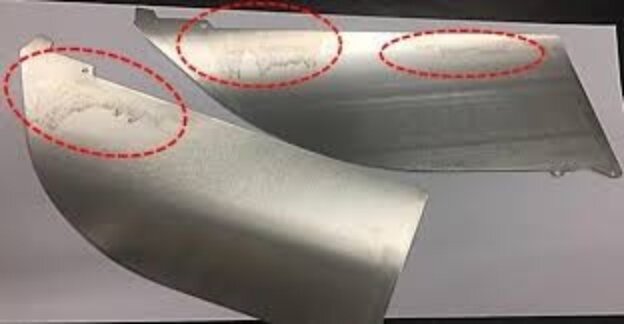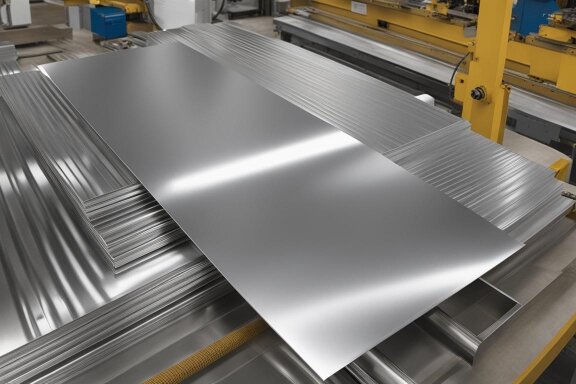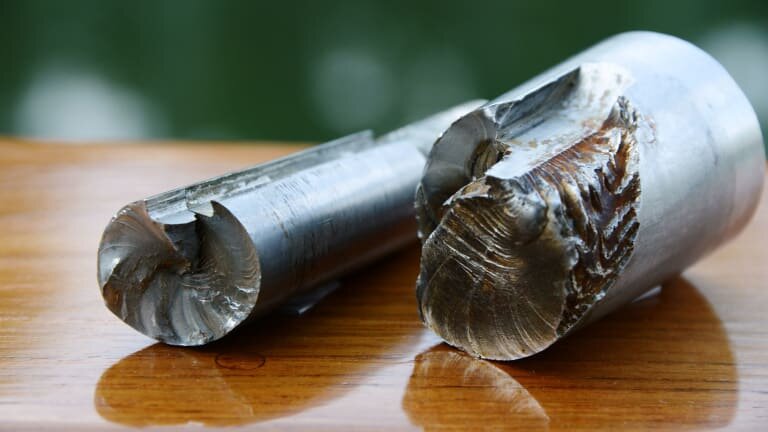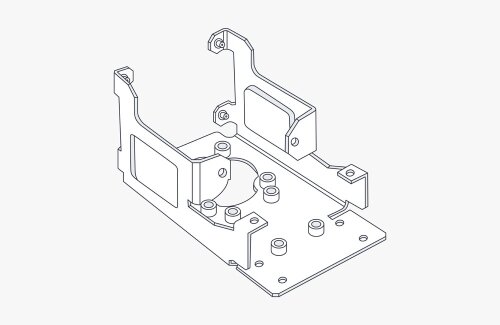Stainless steel is a versatile material widely used in various industries. However, choosing the right finish can be overwhelming due to the numerous options available. Different finishes affect the appearance of stainless steel and influence its performance and suitability for specific applications.
The world of stainless steel finishes is rich and varied, with each type offering unique characteristics and benefits. Let’s explore the most common finishes and their applications to help you select the best option for your needs.
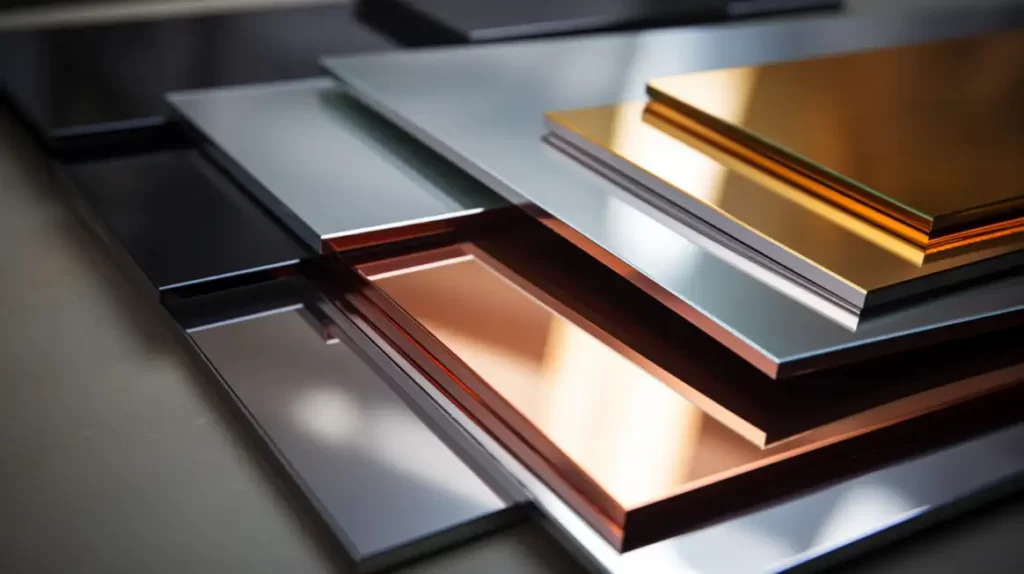
What Are Stainless Steel Finishes?
Stainless steel finishes refer to the various surface treatments applied to stainless steel to enhance its appearance and performance. These finishes can range from dull to highly reflective and are crucial in determining the material’s suitability for different applications.
The finishing process involves altering the outermost layer of stainless steel through rolling, polishing, and blasting methods. Each method affects the surface texture and appearance, resulting in distinct finishes that cater to specific needs.
Types of Stainless Steel Finishes
Stainless steel finishes can significantly affect the material’s appearance and functionality. Understanding the different types of finishes available is essential for selecting the right option for your project.
Mill Finishes
Mill finishes serve as the initial surface condition for stainless steel products and is generally categorized into three main types:
No.1 Finish
The No.1 finish is produced by hot rolling stainless steel, followed by annealing and pickling. This results in a dull, rough surface that is not uniform in appearance. It’s commonly used in applications where aesthetics are not critical, such as elevated-temperature environments.
No.2D Finish
The No.2D finish is a cold-rolled finish with a uniform dull appearance. It is achieved through cold rolling, annealing, and pickling, resulting in a smoother surface than the No.1 finish. This finish is suitable for applications requiring moderate corrosion resistance and is often used as a base for further polishing.
No.2B Finish
The No.2B finish is similar to the No.2D but includes an additional light pass through polished rolls, giving it a brighter, semi-reflective surface. This finish is widely used in various industrial applications due to its good corrosion resistance and aesthetic appeal.

Finishes in Mechanical Finish
Mechanical finishes involve polishing or abrasive processes to enhance the surface characteristics of stainless steel:
No.3 & No. 4 Finishes
The No.3 finish features a coarse grain produced using a 120-grit abrasive brush, while the No.4 finish uses a finer 150-grit brush to create a more refined appearance with directional grain lines. Both finishes are commonly used in architectural and food processing applications.
No.6 Finish
The No.6 finish has a dull silver-white appearance with short linear polishing lines, achieved by Tampico brushing over a No.4 finish sheet. Although it is less common today, it was historically used in architectural applications.
No.7 Finish
A high-luster finish that retains some grit lines, the No.7 finish is produced by grinding and buffing the surface to achieve a reflective quality suitable for decorative elements like trim and wall panels.
No.8 Finish
Also known as mirror finish, the No.8 finish features an extremely reflective surface achieved through extensive polishing with fine abrasives until all imperfections are removed. This finish is often used for aesthetic purposes in mirrors and sculptures.
Other Finishes
Beyond standard finishes, there are several specialized options available:
Custom Finishes
Custom finishes can be tailored to meet specific aesthetic or functional requirements, allowing for unique designs and appearances.
Coloured Finishes
Various methods, such as anodizing or coating, can achieve colored stainless steel finishes, providing additional visual options for architectural and decorative applications.
Etched Finishes
Etched finishes involve applying chemicals to create patterns or textures on the surface of stainless steel, offering distinctive visual effects.
TR (Temper Rolled) Finish
The TR finish involves rolling stainless steel at room temperature to improve its mechanical properties while maintaining a smooth surface.
Embossed Finishes
Embossed finishes feature raised patterns on the surface of stainless steel, adding texture and visual interest while enhancing grip or slip resistance in certain applications.
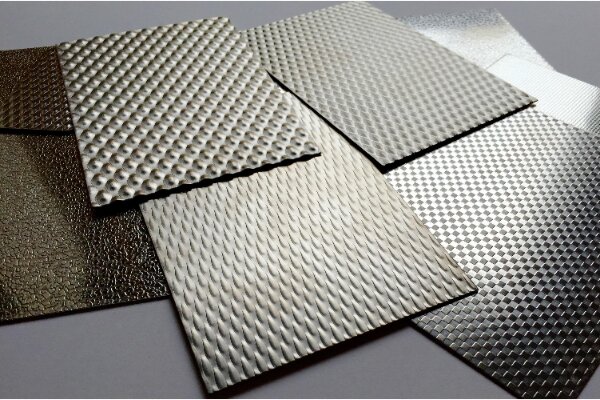
How do we measure and specify stainless steel finishes?
Gauge
The gauge is the first factor to consider when specifying the thickness of sheet metal. The gauge numbers are inversely proportional to the thickness of the sheet metal.
The roughness average (RA)
Roughness average, also known as RA or roughness, is a crucial metric for evaluating the texture of metal surfaces. This statistic measures the average deviation between the peaks and valleys of the character from the median line. People often express this in either microinches or micrometers. A lower RA indicates a more smooth finish.
RMS (Root-Mean Square)
RMS is a similar method to RA. Unlike RA, which uses the average to calculate the surface texture, RMS uses the square root of arithmetic means of the squares for all the profile points. RMS values are higher than RA values for the same surface because they give more weight to higher peaks and deep valleys.
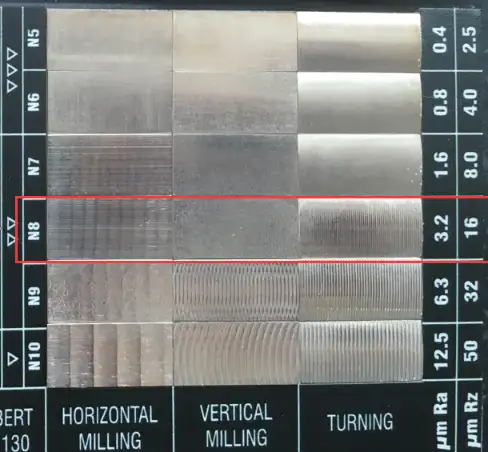
How Are Stainless Steel Finishes Made?
Stainless steel finishes are created through various processes that enhance the material’s appearance and performance. These processes can be broadly categorized into manual and automated finishing methods.
Manual Finishing Methods
Manual finishing involves hands-on techniques requiring skilled operators to achieve the desired surface quality.
Sanding and Grinding
Sanding and grinding are fundamental manual methods for preparing and finishing stainless steel surfaces. Operators typically start with coarse grit sandpaper or grinding wheels to remove imperfections and shape the material.
- Process: The operator uses a grinder or sander, moving in a consistent direction to create a uniform surface. This initial step often involves using grits ranging from 60 to 120, depending on the desired finish.
- Final Touch: After achieving the desired shape, finer grits (up to 240 or higher) are used to smooth the surface and prepare it for polishing.
Buffing and Polishing
Buffing and polishing are crucial for achieving high-gloss finishes on stainless steel.
- Buffing: This process involves using buffing wheels with abrasive compounds to remove fine scratches and enhance the shine. Operators typically progress through various grits, starting from around 150 grit and moving up to 1200 grit or more for a mirror-like finish.
- Polishing: After buffing, a polishing compound is applied using a clean buffing wheel to achieve a final shine. This step ensures that any residual abrasives are removed, resulting in a smooth, reflective surface.
Automated Finishing Techniques
Automated finishing techniques leverage technology to enhance efficiency and consistency in stainless steel finishing processes.
Automated Grinding
Automated grinding systems utilize robotic arms with specialized grinding tools to achieve precise finishes on stainless steel parts.
- Process: The robotic systems are programmed to follow specific paths while applying consistent pressure, ensuring uniformity across multiple pieces.
Laser Finishing Technology
Laser finishing technology is an innovative approach that uses lasers for surface treatment of stainless steel.
- Process: Laser annealing is commonly used for marking or etching stainless steel without compromising its protective layer. This method modifies the surface at a microscopic level, creating permanent markings without affecting the material’s integrity.
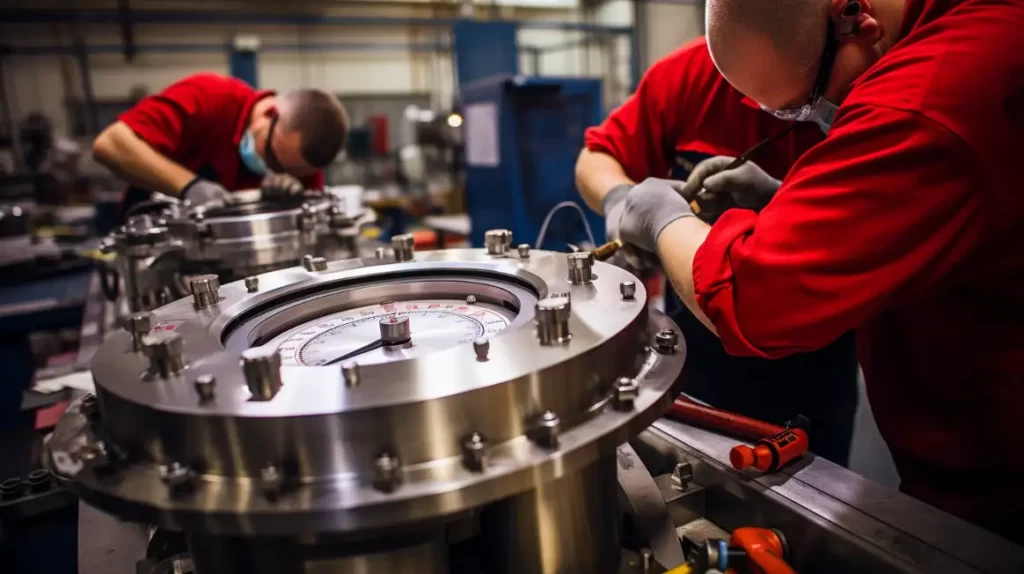
Factors to Consider When Choosing a Finish
When selecting a stainless steel finish, consider the following factors:
- Application: Determine where and how the stainless steel will be used. Different environments may require specific finishes for optimal performance.
- Aesthetic Appeal: Think about the visual impact of the finish on your project. Some finishes offer a sleek, modern look, while others provide a more industrial appearance.
- Maintenance Requirements: Some finishes require more upkeep than others. Choose a finish that aligns with your maintenance capabilities.
- Cost: Different finishes come at varying price points. Evaluate your budget while considering the long-term benefits of each option.
How to Maintain Stainless Steel Finishes?
Maintaining stainless steel finishes is essential for preserving their appearance and functionality over time. Here are some guidelines on how to effectively protect stainless steel finishes.
Proper Cleaning and Care Guidelines
- Regular Cleaning: Use a mild detergent or soap mixed with warm water for routine cleaning. A soft, non-abrasive cloth or microfiber towel is ideal for wiping surfaces.
- Avoid Harsh Chemicals: Steer clear of cleaners containing bleach, ammonia, or chlorides, as these can damage the protective layer of stainless steel.
- Rinse Thoroughly: After cleaning, always rinse the surface with clean water to remove any soap residue.
- Dry Immediately: Use a dry microfiber cloth to wipe the surface after rinsing.
Best Practices for Preventing Damage
- Wipe with the Grain: Always clean and wipe toward the grain to avoid scratches and maintain a uniform appearance.
- Use Non-Abrasive Tools: Avoid abrasive sponges or scrubbers that can scratch the surface.
- Protect from Contaminants: Keep stainless steel surfaces away from carbon steel tools and materials, as they can leave rust particles that damage the finish.
- Inspect Regularly: Check for signs of wear, scratches, or corrosion.
Restoring Damaged Finishes
- Minor Scratches: For light scratches, you can often restore the finish by using a fine abrasive paste specifically designed for stainless steel.
- Stubborn Stains: For tougher stains or discoloration, vinegar and water can help lift grime.
- Deep Cleaning: If the finish has significant discoloration or corrosion, consider using a commercial stainless steel cleaner or polish following the manufacturer’s instructions.
Conclusion
Stainless steel finishes play a vital role in determining the appearance and performance of stainless steel products. The various types of finishes, from mill to polished and specialized options, cater to different aesthetic preferences and functional requirements.
If you have further questions about stainless steel finishes or need assistance with your manufacturing needs, contact us today! Our team is ready to provide expert guidance tailored to your projects.
Hey, I'm Kevin Lee

For the past 10 years, I’ve been immersed in various forms of sheet metal fabrication, sharing cool insights here from my experiences across diverse workshops.
Get in touch

Kevin Lee
I have over ten years of professional experience in sheet metal fabrication, specializing in laser cutting, bending, welding, and surface treatment techniques. As the Technical Director at Shengen, I am committed to solving complex manufacturing challenges and driving innovation and quality in each project.

